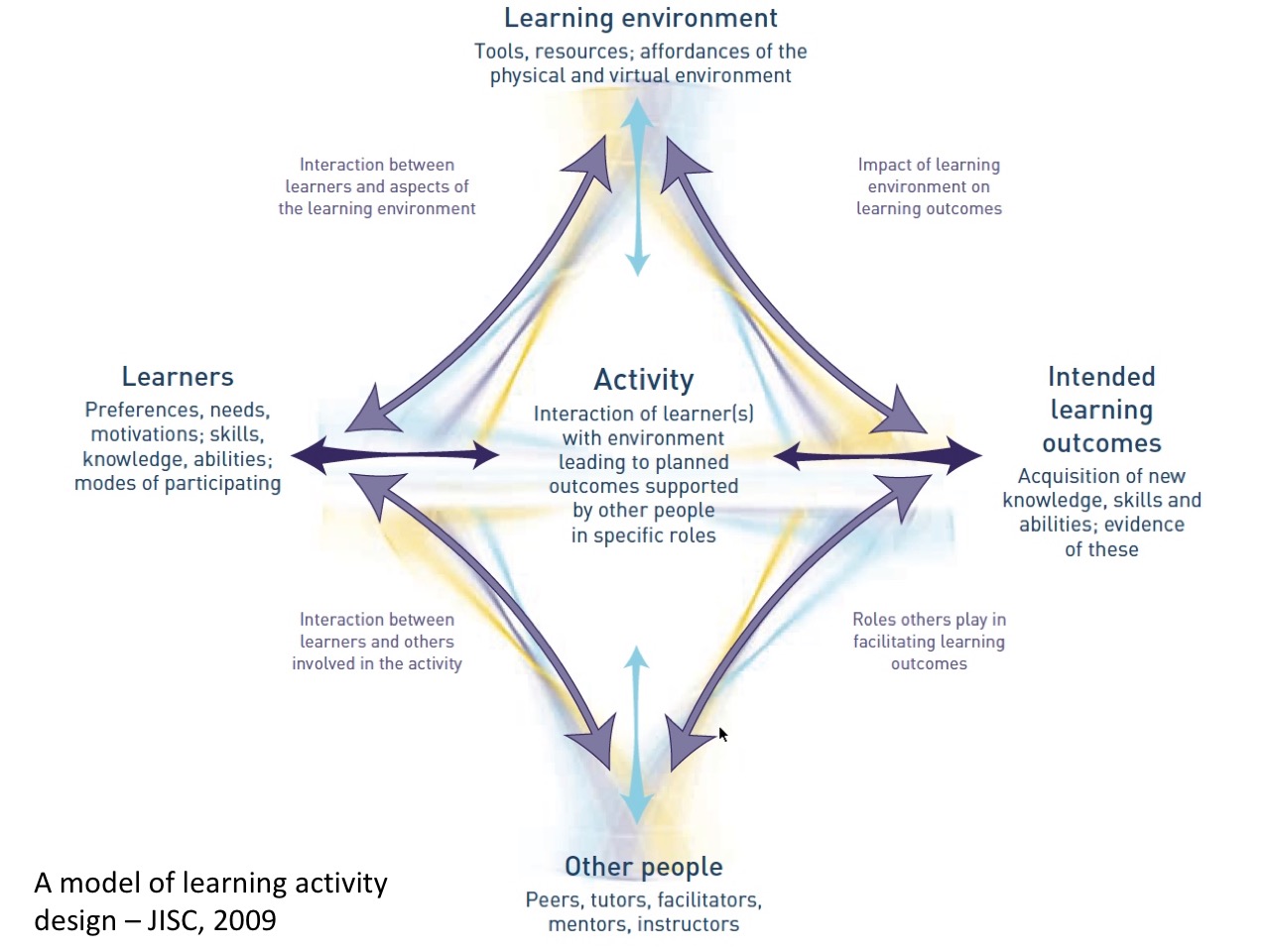On November 9, 2010, five internationally recognized experts in online learning met virtually to discuss the value of interaction, specifically learner-to-learner interaction in online courses. They included:
- Terry Anderson, Professor at Athabasca University and Canada Research Chair in Distance Education
- Zane Berge, Professor of Education/Training and Development at University of Maryland/Baltimore
- Charlotte (Lani) Gunawardena, Professor of Organizational Learning and Instructional Technology, University of New Mexico
- M. D. (Peggy) Roblyer, Adjunct Professor of Instructional Technology/Distance Education at Nova Southeastern University
- Karen Swan, Professor in the Teacher Leadership program and holds an endowed chair for research on educational technology at University of Illinois/Springfield
Each had enthusiastically responded to an invitation by Quality Matters to provide scholarly insights from the research to inform the review of Rubric Standard 5.2. That 2010 standard stated:
"Learning activities foster instructor-student, content-student, and if appropriate to the course, student-student interaction."
The Interaction Summit provided a forum for leading researchers to discuss the literature on online learner interaction. These expert panelists presented key points about the value of such interaction in higher education and even more specifically on the value of learner-learner interaction, including relevant issues, conditions and learning environments. Slides and notes on these presentations are attached below.
Part I: Expert Presentation
The value of interaction in online learning: While interaction is a natural human part of our lives and can be "a force for good" (Christakes & Fowler, 2009, p. xii) it is a complex educational concept. Thus, it is dangerous if we, as educators, make simplistic statements that ignore the richness of the dimensions of interaction and what the research reveals about its complexity.
The value of learner-learner interaction: Learning activities are so varied and dependent on intended learning outcomes - learning environment, learners, and other people, that learner-learner interaction might not be appropriate in all online courses.
The expert panelists commented on the status and challenges of the research relating to interaction. They concluded:
- Researchers need to move beyond studying student/teacher perceptions and satisfaction. We need to determine if more and different types of interaction equate to increased learning outcomes. The use of academic analytics is promising approach that might help researchers identify interaction patterns in which successful students engage but unsuccessful students to not.
- Interaction with others is such a human thing to do that it has become almost a "motherhood statement" when discussing learning. But, as educators we need to stop and ask what’s the evidence? Does it hold true for all learners, for all disciplines, for all topics?
- A review of the recent research literature on learner-learner interaction reveals lack of consistency and replication. So many variables influence outcomes of the studies that results are too limited to draw cross-study conclusions.
- Lack of consistency: For example: Of five studies focused on graded group interaction, one study used adults in Malaysia and another used fifth-grade geometry students. Broad conclusions about the issue of group interaction would be unethical.
- Lack of replication: Patterns of interaction cannot be determined unless studies are replicable. Replicable patterns are not evident in the literature on the value of learner-learner interaction except for some work done using the Community of Inquiry framework.
- The Community of Inquiry (CoI) framework is process model, grounded in social-constructivist assumptions that effective learning in higher education requires the development of a community of learners that supports meaningful inquiry; that the presence of a group is necessary for learning. While the framework is of great value, at this point it is limited to courses designed from a constructivist perspective and may not hold true for learning outcomes in all types of course. The CoI survey is currently being used in a number of studies to test out further implications and to provide some replication.
Part II: Questions & Discussion
This was a forum for a discussion of how the research literature could be applied directly to the question on the QM Rubric standard on student interaction. The QM committee members attending the summit provided specific questions for the expert panel to consider in an interactive format. This guided discussion among and participant and the experts eventually led to the following recommendation for updating standard 5.2:
"Learning activities should foster learner interaction."
It was recommended that the accompanying annotation should include references to nuances of interaction, but not endorse any particular type of interaction.
- Examples of types of interaction should be provided, such as teacher-learner; learner-content; learner-learner; and perhaps, learner-professional community.
- Selected interactions should be appropriate to the learners and sociocultural context. Examples would need to be included in the annotation.
- Panelists noted that interactions should be consistent with the educational philosophy (for example, constructivism, cognitive-learning, behaviorism) of the particular course, variable, and include learner reflection on the impact of those interaction activities on own learning. It was noted however that this might be challenging for review teams to assess, even with SME
- Cognitive overload (learner "shut down") should be pointed out as a possibility if too much learner-learner interaction required.

